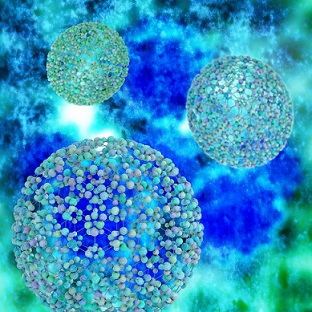The new generation of microscopic robots

Related topics
Health ICT Research & Innovation Innovation Funding Researchers European Research Council ICT Health, Demographic Change and Wellbeing Czechiadate: 24/01/2014
Project: Chemical processing by swarm robotics
acronym: CHOBOTIX
See also: Info-centre
Contact: http://www.chobotix.cz/
These tiny robots could have applications in various fields, from seeking out a source of contamination and neutralising it in toxic waters to treating patients in a more efficient way by delivering the exact amount of a drug to a targeted area of the body.
Inspired by both nature and science fiction, the ERC-funded project Chobotix (Chemical Processing by Swarm Robotics) has brought the first prototypes of microscopic robots to life. This project, which works on the design and synthesis of chemical swarm robots, was the first to benefit from an ERC Starting Grant in the Czech Republic.
"These micro-entities can also be defined as "artificial cells" or "artificial single-cellular organisms" (called "chobots")", says Dr František Štěpánek, the head of the international team of young researchers carrying out this work in the Laboratory of Chemical Robotics at the Institute of Chemical Technology in Prague . "These "chobots" measure tens of micrometers, so they can get to the tiniest places. As synthetic single-celled organisms, they can move in their environment and selectively exchange molecules with their surroundings in response to local changes in temperature or concentration of a molecule." They can also change the chemical composition of their environment by either accumulating or releasing a substance.
The main areas being explored in the course of this project are: the synthesis of suitable shells for chemically active swarm robots; the mechanisms of molecular transport into and out of such shells and how to actively control this process; and the collective behaviour of chemical swarm robots and their response to external stimuli.
In future, chemical robots could be used for different purposes, for instance to deliver substances in a more efficient way, to find sources of pollution or to identify chemicals or cancerous cells in the human body. Robots might even be able to deliver the exact amount of a drug directly to the right place without harming any other cells, as is the case in current cancer treatments. Chemical robots are potentially able to act in very remote or inaccessible areas, so they could be used for "intelligent cleaning". Other potential applications are in agro-chemistry, cosmetics and consumer chemistry more widely.
Dr František Štěpánek says: "After 4 years of existence, this project has fulfilled its goals and even gone beyond them. We have created the first prototypes of our chemical robots. In cooperation with other research teams of biochemists, we have managed to create a structure that can deliver the substance on demand, where needed, and which is able to release its content repeatedly. We are now entering the phase of demonstrating "swarming", i.e. collective behaviour of robots".
"The ERC funding has made a big difference in the way I conduct my research", he continues. "It allows me to consolidate my funding into a single source, which means that a critical mass of people can work on a single research theme over a longer period of time. We can therefore make significant progress."
With a truly visionary angle, František Štěpánek's project covers many scientific fields, ranging from chemical engineering, material engineering, biophysics and microbiology to applied mathematics for computer simulation
Video: click here
Related article: Swarming chemical robots offer tiny labs to fight cancer
